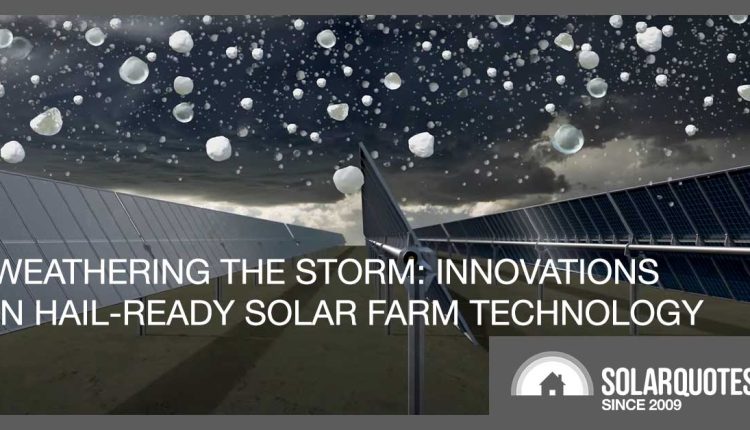Weathering the Storm: Innovations in Hail-Ready Solar Farm Technology
Given that climate change will cause more extreme weather events, hailstorms are bound to pose a growing challenge to solar farm operators.
As noted in this 2021 study published in Nature by UNSW’s Timothy Raupach, “low-level moisture and convective instability will increase, raising hailstorm likelihood and enabling the formation of larger hailstones”.
And hailstorms are already bad news for solar farms. US vendor Powerfactors noted in 2022 that one storm in May 2019 caused between $US70 million and $US80 million worth of damage to one farm in Texas.
For farms with tracking technology, the best mitigation in a hailstorm is to stow the panels – angle them as near to vertical as possible to reduce (or even eliminate) hail damage.
Getting that to happen quickly is the next challenge, one that vendor Nextracker says it has beaten. The company launched its solution at last month’s RE+ conference in Las Vegas.
Nextracker’s NX Hail Pro is controlled either by an operator or its own software, to stow a solar farm’s panels as much as four times faster than competing solutions, the company says.
The system can be configured for automatic stowing, the company said, taking weather information and hail readiness services as its inputs.
The Hail Pro-75 version can stow panels at up to 75 degrees from the horizontal for locations that experience extreme hail.
CEO Daniel Shugar said on LinkedIn that Nextracker first started offering hail stow capabilities three years ago, and insurers have received the advent of the technology with enthusiasm.
Tips from Finn for residential solar owners worried about hail damage:
Good quality solar panels are made from tempered glass and, as such, should be able to resist hail stones on most occasions.
However, a bloody big hailstone travelling at speed will smash even the best solar panel, so my advice is to:
- inform your home and contents insurance provider that you have solar,
- include your solar system in your policy,
- confirm that hail damage is included.



Comments are closed.